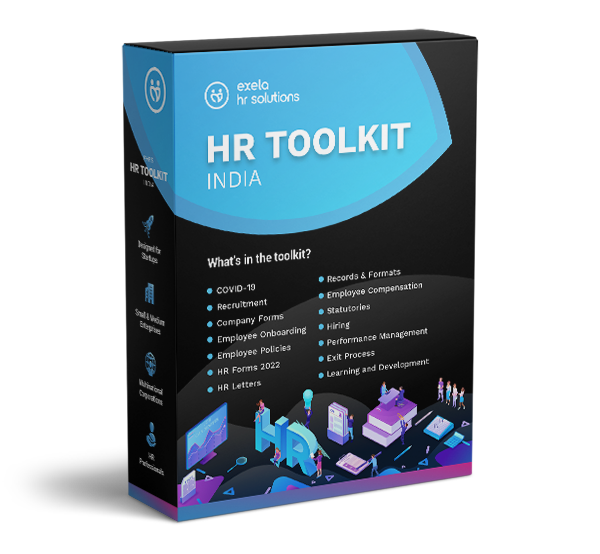
The end of the year is not just a time for festivities and celebrations but also a critical juncture for businesses, especially small to medium-sized organizations, as they gear up for the essential task of year-end payroll processing. This process involves more than just crunching numbers; it's a meticulous review and reconciliation of the entire year's financial transactions related to employee compensation.
As the year concludes, businesses are presented with a golden opportunity to assess their financial health, ensure compliance with regulatory requirements, and set the stage for a smooth transition into the new year.
For small and medium-sized businesses (SMBs), where resources are often limited, a streamlined and efficient year-end payroll process is not merely a good practice—it's a strategic imperative.
A well-executed year-end payroll ensures accurate financial reporting, mitigates compliance risks, and sets the foundation for robust financial planning in the coming year. Beyond compliance and financial considerations, a smooth payroll process contributes to employee satisfaction and trust, fostering a positive workplace culture.
In this blog, we'll delve into eight invaluable tips to guide SMBs in achieving a seamless year-end payroll experience. From strategic planning to technology integration, these tips are tailored to empower SMBs to navigate the complexities of year-end payroll with confidence and finesse. Dive in below to learn more.
8 payroll year-end tips
-
Planning Ahead
-
Setting a timeline for year-end payroll tasks
As the year draws to a close, time becomes a precious commodity. Establish a clear and realistic timeline to ensure a hiccup-free year-end payroll process.
Break down tasks into manageable chunks, assigning specific deadlines for each. This proactive approach not only prevents the last-minute scramble but also allows for thorough reviews, reducing the risk of errors and ensuring compliance with regulatory deadlines.
-
Communicating with relevant stakeholders about deadlines
Communication is key. Reach out well in advance to all stakeholders involved in the year-end payroll process—HR, finance, and even employees— Clearly communicate deadlines and expectations, fostering a collaborative environment.
By aligning everyone with the established timeline, you create a cohesive team focused on the common goal of achieving a smooth year-end payroll transition. Regular updates and reminders can further reinforce the importance of adhering to the established schedule.
-
-
Updating Employee Information
-
Reviewing and updating employee records
Accurate employee information is the bedrock of a seamless payroll process. Initiate a comprehensive review of employee records, verifying details such as names, addresses, and tax withholding information. Promptly address any discrepancies to prevent issues down the line. This meticulous review not only ensures payroll accuracy but also facilitates the generation of precise year-end reports.
-
Ensuring accuracy in personal and financial details
Precision is paramount when it comes to personal and financial details. Confirm that employee bank account information is current for direct deposit purposes.
Additionally, verify tax-related details, such as allowances and deductions, to guarantee compliance with tax regulations. This proactive approach minimizes the risk of errors in payroll calculations, and fosters trust among employees by ensuring that their financial information is handled with the utmost care.
-
-
Compliance Check
-
Overview of relevant tax and labor laws
Stay on the right side of the law by conducting a thorough review of pertinent tax and labor regulations. Familiarize yourself with any changes that may have occurred during the year, ensuring your payroll processes align with the latest legal requirements. This proactive approach safeguards your business against potential penalties and legal complications.
-
Ensuring compliance with regulations and avoiding penalties
Compliance isn't just a box to check; it's a safeguard against potential pitfalls. Regularly audit your payroll processes to confirm adherence to regulations. Pay close attention to issues like minimum wage requirements, overtime rules, and tax withholding obligations.
By staying vigilant, you not only mitigate legal risks but also bolster your business's reputation as a responsible and law-abiding employer.
-
-
Technology Integration
-
Exploring payroll software options
In the digital age, leveraging cutting-edge payroll software can be a game-changer for small to medium-sized businesses. Explore and invest in user-friendly payroll solutions that align with the specific needs and scale of your organization.
Look for features such as automated tax calculations, direct deposit capabilities, and robust reporting functionalities. The right software not only streamlines processes but also reduces the likelihood of manual errors.
-
Integrating technology for efficiency and accuracy
Once you've selected a payroll software solution, seamlessly integrate it into your existing systems. Ensure compatibility with other relevant software, such as accounting tools and HR management systems. This integration not only enhances overall efficiency but also reduces the risk of data discrepancies.
Automation features can significantly cut down on time-consuming manual tasks, allowing your team to focus on strategic aspects of year-end payroll, such as compliance and reporting.
Embracing technology isn't just a convenience—it's a strategic move that empowers your business with the tools to navigate the complexities of year-end payroll processing with precision and efficiency.
-
Also Read: Precision in Payroll: 10 Tips for Foolproof Compliance
-
Employee Communication
-
Informing employees about year-end processes
Transparency is key when it comes to year-end payroll activities. Keep your employees in the loop by clearly communicating the processes that will unfold. Provide them with a timeline of when to expect year-end statements, tax forms, and any changes to payroll procedures. This proactive communication not only fosters trust but also empowers employees to address any concerns or questions they may have.
-
Addressing any concerns or questions regarding payroll
Open the lines of communication by creating channels for employees to express their queries or concerns related to year-end payroll. Establish a dedicated point of contact, such as a human resources representative, to field questions and provide clarifications.
Resolving issues promptly not only ensures a smoother payroll process but also reinforces a positive employer-employee relationship, which is integral to overall workplace satisfaction.
-
-
Year-End Reporting
-
Generating and reviewing year-end payroll reports
As the year concludes, generate comprehensive year-end payroll reports to capture a holistic view of your organization's financial landscape. These reports should encompass crucial details such as total wages, tax withholdings, and benefits contributions. Thoroughly review these documents for accuracy, identifying any anomalies or discrepancies that may require correction.
-
Ensuring accuracy in tax forms and financial statements
Accuracy is non-negotiable when it comes to tax forms and financial statements. Prioritize a meticulous review of all tax-related documents, including W-2s and 1099s, to ensure they reflect the correct information. Accuracy not only satisfies regulatory requirements but also lays the groundwork for a hassle-free tax filing season for both your business and its employees.
A meticulous approach to year-end reporting not only aids in compliance but also provides invaluable insights for strategic decision-making in the upcoming year.
-
-
Budgeting for the New Year
-
Reviewing the previous year's payroll expenses
Before diving into the new year, conduct a comprehensive review of the previous year's payroll expenses.
Analyze trends, identify areas of significant expenditure, and evaluate the overall financial impact of your workforce. This retrospective analysis serves as a foundation for informed decision-making in the budgeting process.
-
Budgeting for the upcoming year based on payroll insights
Armed with insights from the previous year, develop a strategic payroll budget for the upcoming year. Consider factors such as anticipated growth, changes in employee composition, and any upcoming regulatory adjustments.
Align your budget with organizational goals, ensuring that your workforce remains a driving force behind your business objectives. A well-crafted payroll budget provides financial clarity and enables proactive management of resources.
Strategic budgeting transforms payroll from a reactive expense to a strategic asset, allowing your business to allocate resources efficiently and plan for sustained growth in the coming year.
-
-
Employee Benefits and Recognition
-
Reviewing and updating employee benefits information
Take the year-end opportunity to reassess your employee benefits program. Review existing benefits packages, ensuring they align with industry standards and employee needs. Consider seeking feedback from your workforce to identify potential improvements or additions. Updating benefits enhances employee satisfaction and aids in talent retention and recruitment efforts.
-
Recognizing and rewarding employees for their contributions
Acknowledging employee contributions is integral to fostering a positive workplace culture. Consider implementing a recognition program or reviewing existing ones to ensure they remain effective.
Express gratitude for hard work and dedication, whether through formal awards, personalized notes, or small tokens of appreciation. Recognizing employees not only boosts morale but also contributes to a motivated and engaged workforce.
-
Conclusion
A streamlined year-end payroll process is not just a routine task; it's a pivotal element in the financial health and operational efficiency of small to medium-sized businesses. The meticulous execution of year-end payroll tasks ensures accuracy and compliance and sets the stage for a successful start to the new year.
Looking ahead to the new year, consider partnering with Exela HR Solutions to elevate your payroll processes. With a wealth of experience and expertise in HR outsourcing, Exela HR Solutions provides tailored solutions to streamline payroll, enhance compliance, and improve overall efficiency.
By entrusting your payroll needs to Exela HR Solutions, you can focus on your core business functions, confident that your workforce management is in capable hands.
Get Exela HR Solutions now!
DISCLAIMER: The information on this site is for general information purposes only and is not intended to serve as legal advice. Laws governing the subject matter may change quickly, and Exela cannot guarantee that all the information on this site is current or correct. Should you have specific legal questions about any of the information on this site, you should consult with a licensed attorney in your area.





